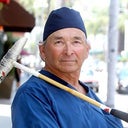I had my ears pinned. The ears are not pinned the same amount, and one is pinned back too far. Is this a procedure that can be "reversed" at least a bit?
Michael
Answers (20)
From board-certified doctors and trusted medical professionals
More Ear Surgery Questions
See all Ear Surgery Q&AWE SEND PRETTY
EMAILS
What’s trending? Who’s turning heads? Which TikTok myths need busting? We’ve got you. No fluff, no gatekeeping—just real talk. Get our free, unfiltered newsletter.






